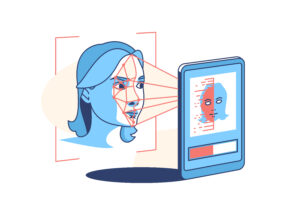It’s becoming increasingly difficult for retailers and e-commerce companies to keep up with customer demand and stay competitive in the ever-changing digital landscape. That’s why so many companies are turning to Optical Character Recognition (OCR) technology to help them streamline their processes and save both time and money. In this article, we’ll explore what OCR is, how it can be used in retail and e-commerce, and some of its potential benefits. Read on to learn more!
OCR technology
OCR technology is revolutionising the retail and e-commerce industry by making it easier for businesses to automate their data capture processes. By using OCR software, businesses can scan and digitise paper documents, receipts and invoices with ease, eliminating the need for manual data entry. This not only saves time and money, but also reduces the risk of human error.
In the past, businesses would have to manually enter data from paper documents into their computer systems. This was a time-consuming and error-prone process that often led to frustration and wasted resources. Thanks to OCR technology, this is no longer necessary.
OCR software can quickly and accurately scan paper documents and convert them into digital format. This means that businesses can now easily store and manage all their data in one central place. Not only does this make life easier for business owners and employees, but it also makes it easier for customers to access information they need.
There are many different types of OCR software available on the market, so it’s important to choose one that’s right for your business needs. For example, some software is designed specifically for retail businesses, while others are better suited for e-commerce companies. Whichever type of OCR software you choose, you’re sure to see a big difference in your business efficiency!
How OCR is used in retail and e-commerce
OCR is used in retail and e-commerce to automate the process of data entry. When a customer makes a purchase, their information is entered into the system using OCR. This information can include the customer’s name, address, email, and credit card information.
This process is much faster and more accurate than manual data entry, and it eliminates the need for employees to manually input this information. This can save businesses a significant amount of time and money. In addition, it can also help to improve customer satisfaction by reducing errors and increasing accuracy.
The benefits of using OCR in retail and e-commerce
There are many benefits of using OCR in retail and e-commerce. Perhaps the most obvious benefit is that it can help to automate the process of data entry. This can save a significant amount of time and money, as well as reducing the chances of errors being made.
Another big benefit is that OCR can help to improve customer service. For example, if a customer is trying to find a particular product on your website but is having difficulty doing so, OCR can be used to quickly search through your entire product catalogue and bring up the relevant results. This can save customers a lot of time and frustration, and may even lead to more sales.
Finally, OCR can also help you to better understand your customers and their buying habits. By tracking what products they are searching for and how long they spend looking at each one, you can gain valuable insights into what kind of products are most popular with your target audience. This information can then be used to make strategic decisions about stocking levels, marketing campaigns, and more.
The challenges of using OCR in retail and e-commerce
There are several challenges that can make using OCR in retail and e-commerce difficult. One is the high volume of data that needs to be processed. For example, a store might need to scan and recognize tens of thousands of barcodes every day. Another challenge is the variety of products that need to be scanned. This can include everything from clothes to food to electronics. Each type of product has its own unique barcode, and the scanner needs to be able to recognize all of them. Finally, there is the issue of environmental conditions. Barcodes can be damaged or difficult to read if they are dirty, damaged, or in a low-light environment.
Guidelines for using OCR in retail and e-commerce
There are a few guidelines to follow when using OCR in retail and e-commerce:
1. Always check the accuracy of the OCR results. This is especially important for products with unique names or SKUs.
2. Make sure your product images are high quality and clear. Blurry or low-resolution images can cause issues with OCR recognition.
3. When using OCR for price comparison, be aware that some retailers use different pricing models (e.g., list price vs. sale price). This can impact the accuracy of the OCR results.
4. Be cautious when using OCR to automatically populate fields in an online checkout form. If the wrong information is entered, it could cause problems with your order.
Conclusion
Optical Character Recognition is an essential tool for retailers and e-commerce businesses, enabling them to process customer data quickly and accurately. It helps reduce manual data entry errors and improve accuracy, which saves time and money. OCR also makes it easier for customers to make purchases online as they can enter their information with fewer keystrokes. With the increasing use of mobile devices in retail settings, OCR has become even more important in providing a user-friendly experience that meets customer expectations. The implementation of this technology is sure to be beneficial for both retailers and consumers alike.






